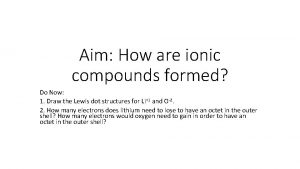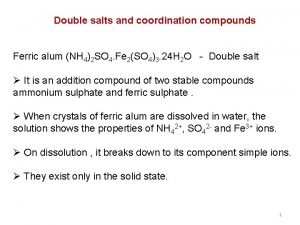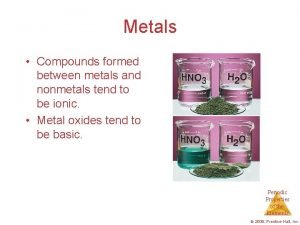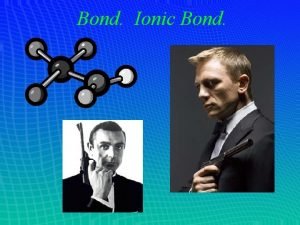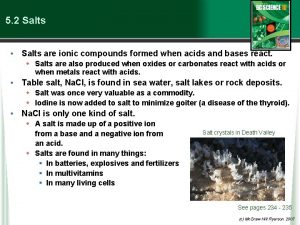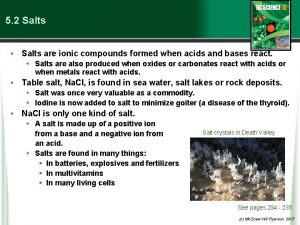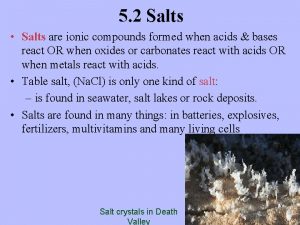5 2 Salts Salts are ionic compounds formed





- Slides: 5

5. 2 Salts • Salts are ionic compounds formed when acids & bases react OR when oxides or carbonates react with acids OR when metals react with acids. • Table salt, (Na. Cl) is only one kind of salt: – is found in seawater, salt lakes or rock deposits. • Salts are found in many things: in batteries, explosives, fertilizers, multivitamins and many living cells Salt crystals in Death Valley

Acid-Base Neutralization & Metal Oxides • Neutralization reactions occur when an acid and a base react to produce a salt and water. – HCl(aq) + Na. OH(aq) Na. Cl(s) + H 2 O( ) acid base salt water • Metal oxides react with water to form bases. – Na 2 O(s) + H 2 O( ) 2 Na. OH(aq)

Non-Metal Oxides • Non-metal oxides react with water to form acids – SO 2(g) + H 2 O( ) H 2 SO 3(aq) – Non-metal oxides are formed from the burning of fossil fuels • Add water in the atmosphere = acid precipitation The effects of acid rain on a forest

Acids and Metals • Acids and Metals – The most reactive metals, at the bottom of groups 1 and 2, react vigorously with water and acids. – All other metals are less reactive than those in groups 1 and 2. – When metals do react with acids, H 2 gas is usually released – 2 HCl(aq) + Mg(s) Mg. Cl 2(s) + H 2(g)

Acids and Carbonates • Acids and Carbonates – Carbonates (-CO 3) neutralize acids, protecting locations with natural carbonate supplies from acid precipitation. – H 2 SO 4(aq) + Ca. CO 3(s) Ca. SO 4(s) + H 2 O(l) + CO 2(g) sulphuric calcium water carbon acid carbonate sulphate dioxide Take the Section 5. 2 Quiz

